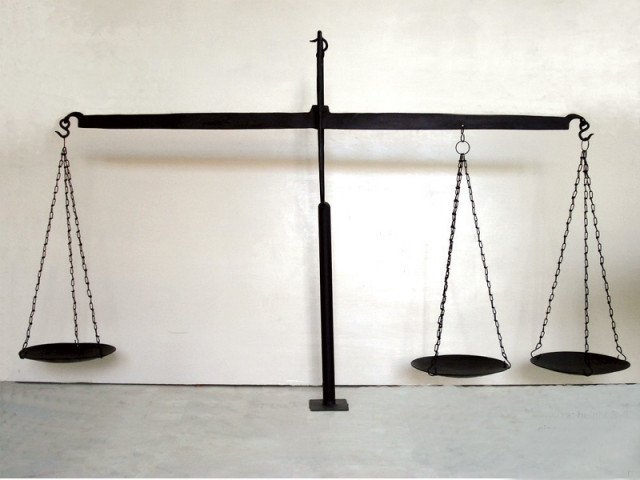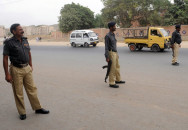In a land of charpoys with five legs, cultural imperialism provides lessons to unlearn
When you weigh it up, our country is under more foreign influence than we realise.

In a quaint, two-roomed gallery surrounded by the Chinese, Kuwaiti and Russian consulates, Amjad Ali Talpur challenges globalism and the unconscious integration of different cultural practices.
Speaking in Urdu with a broad Sindhi accent, Talpur told The Express Tribune about his latest exhibition at the Canvas Gallery, that opened on Monday, March 29.
“I still don’t know what my language is!” said the excited Talpur in a telephone interview. “When I speak English, I make mistakes and when I write Urdu, I end up mixing it with Sindhi.”
This “confusion” works itself into a few pieces such as ‘My Language’, a white and black pen and ink calligraphic inscription on Lasani wood. The overlaid English, Urdu and Sindhi letters are spaced on what looks like a takhti that schoolchildren used before exercise copies became mainstream. Aside from this ‘learning’ of multiple languages, the piece offers a secondary ‘reading’ as it looks like the chart you look at when getting your eyes checked. The superimposition of the letters makes them look blurred as if the viewer’s vision is blurred and hence the boundaries between the three cultural symbols. This speaks superbly to the cultural confusion that can be experienced by a region such as the Indian Subcontinent that has been colonised, attacked and conquered and hence influenced many times over. “There are some changes that we aren’t even aware of,” he said. “For example you may think you are bilingual (Urdu and English) but you must have studied a bit of Sindhi as well, and even Arabic.” Talpur also displays a sense of humour about this ‘cultural confusion’. He has created a comical five-legged bed out of the conventional charpoy (four-post bed). The extra leg and the pentagonal structure is a metaphor for the “extra” foreign influences in Pakistani culture. “These objects are the necessities of human beings and reflect the current situation of my country,” said Talpur in his artist’s statement. “It is full of crises, a large population and limited resources, which increases the sociological and psychological problems in our society.”
Talpur claims he “enjoys the process of the work, randomness, playfulness and humour” in his practice. His favourite piece, “Jhoot bolna achi baat hai” (Lying is a good thing) refers to the underlying perception of Pakistan being a country of liars.
It shows a student poring over a book teaching him to deceive. Another structure, a balance with two scales on one side and one on the other, is a clever way to point to injustice in a society as well.
Published in The Express Tribune, March 31st, 2011.



















COMMENTS
Comments are moderated and generally will be posted if they are on-topic and not abusive.
For more information, please see our Comments FAQ